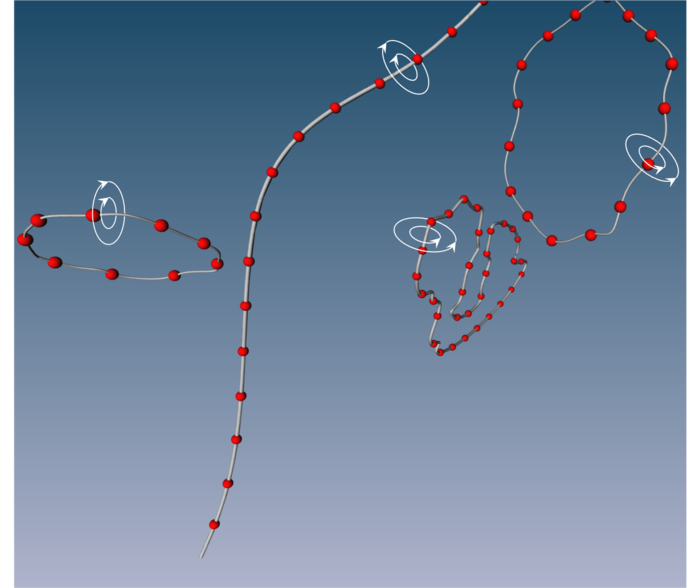Reviewed by Alex SmithMay 5 2022
Silicon nanoparticles can become trapped within the vortices that develop inside superfluid helium, according to researchers from Osaka University’s Graduate School of Engineering Science.
 Silicon nanoparticles stabilized along the quantized vortex cores. Image Credit: Yosuke Minowa.
Silicon nanoparticles stabilized along the quantized vortex cores. Image Credit: Yosuke Minowa.
The current study unravels new possibilities in optical research for other quantum properties of superfluid helium, like the optical manipulation of quantized vortices owing to the strong interaction between silicon nanoparticles and light.
Quantum mechanics’ rules may appear strange, with particles that act like waves at times and vice versa. Normally strange quantum behavior is expected to be confined to extremely small scales. When certain materials, such as helium-4, are cooled to extremely low temperatures, however, the waviness has impacts that can be seen even at macroscopic scales.
This “supercooled” helium is an example of a Bose-Einstein condensation, where the waves portraying the atoms overlap until the fluid behaves almost like a single particle. Since the transition to a superfluid in helium-4 occurs at relatively low temperatures, this method has no classical analog and is a useful system for evaluating quantum mechanics theories. However, the possibility to visualize the motion of the superfluid is still required.
Recently a group of scientists headed by Osaka University used silicon nanoparticles to help visualize the properties of superfluid helium, similar to how throwing pebbles helps visualize the flow of water in a waterfall.
We were able to provide direct experimental evidence that dense silicon nanoparticles are attracted to quantized vortices, and stabilize along the vortex core.
Yosuke Minowa, Study First Author, Osaka University
One of the unique properties of superfluid helium is that any rotational motion can occur only in the form of quantized vortices. These are small, discrete whirlpools with a fixed amount of angular momentum in each one. The researchers explored the process of vortex reconnection, in which lines of vortices coalesce and swap parts, using nanoparticles. The vortex lines were clearly visible due to light scattering from the nanoparticles.
Our proposed technique enables us to use many different materials as tracer particles of quantized vortices.
Yosuke Minowa, Study First Author, Osaka University
Quantized vortices in superfluid helium could help researchers understand more exoteric quantum systems, like the critical current in high-temperature superconductors.
Journal Reference:
Minowa, Y., et al. (2022) Visualization of quantized vortex reconnection enabled by laser ablation. Science Advances. doi.org/10.1126/sciadv.abn1143.